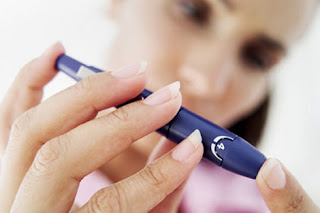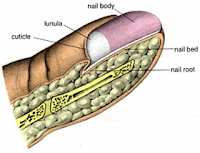Diabetic Foot Care
Introduction to Diabetic Foot Care
Diabetes Mellitus is a condition in which either your pancreas does not produce enough insulin or it produces sufficient insulin but the cells of your body are unable to use the insulin. Foot Complaints are the leading cause of hospitalization of people with diabetes. It is estimated that 15% of all diabetics will develop a serious foot complaint at some time. People with diabetes can develop a variety of foot complaints, which can result in severe cases, to an amputation of a toe, foot or leg.
However, with regular visits to a chiropodist or podiatrist along with patient education, appropriate footwear and daily foot inspections, one can prevent any serious complaints.
The three main complications associated with diabetes are: -
NEUROPATHY
Neuropathy can simply be defined as a complete or partial loss of sensation in the feet and legs. A patient may not be able to feel a soft touch or a sharp sensation on their lower limbs. Therefore, the patient is unable to recognize and prevent injuries due to neuropathy. This can result in severe trauma and injury to the feet.
A chiropodist may test if a diabetic patient has neuropathic feet by testing if the patient can feel soft touch, sharp touch and use a vibrating fork to test if the patient can feel the sensation of vibration against their skin.
Neuropathy can also lead to sharp shooting pains in the feet. These can be very painful and usually occur at night. It can also cause muscle weakness in the foot, which can result in foot drop. Foot drop is when a foot can not be raised during walking. This may lead to bunions, corns and calluses
However, with regular visits to a chiropodist or podiatrist along with patient education, appropriate footwear and daily foot inspections, one can prevent any serious complaints.
The three main complications associated with diabetes are: -
- Neuropathy (diminished sensation)
- Poor circulation
- Decreased resistance to infection.
NEUROPATHY
Neuropathy can simply be defined as a complete or partial loss of sensation in the feet and legs. A patient may not be able to feel a soft touch or a sharp sensation on their lower limbs. Therefore, the patient is unable to recognize and prevent injuries due to neuropathy. This can result in severe trauma and injury to the feet.
A chiropodist may test if a diabetic patient has neuropathic feet by testing if the patient can feel soft touch, sharp touch and use a vibrating fork to test if the patient can feel the sensation of vibration against their skin.
Neuropathy can also lead to sharp shooting pains in the feet. These can be very painful and usually occur at night. It can also cause muscle weakness in the foot, which can result in foot drop. Foot drop is when a foot can not be raised during walking. This may lead to bunions, corns and calluses
FOOT CIRCULATION
People with diabetes often suffer from peripheral vascular disease. This can result in cramps in the calves. This is known as intermittent claudication. The temperature of the skin may decrease and there may be a change in color of the skin. A decrease in the flow of blood to the feet produces inadequate delivery of oxygen and nutrients to the foot. This can lead to serious consequences if a foot is injured, as healing will be impaired. For this reason, diabetic patients are urged to take better care of their feet. Especially elderly diabetic patients, as infections can spread rapidly through their feet.
ULCER....
An ulceration is usually a painless sore on the bottom of the foot. It can be present on any aspect of the foot or under a corn, callus or blister. Trauma in the form of heat, cold and shoe pressure can result in an ulcer. Force or friction against the bottom of the foot can also lead to pressure ulcers. Neuropathy allows an ulcer to develop without the patient without a patient noticing it. This is known as a neuropathic ulcer.
On the other hand, a very painful ulcer can be due to poor circulation and is known as an ischemic ulceration. Treatment is dependent upon early diagnosis. A chiropodist may use padding to redistribute pressure away from the lesion. Use of dressings, antiseptics and orthotics may also be used to treat an ulceration. In severe cases, gangrene may develop, this may result in surgery to the foot.
With your chiropodists help, small cracks in the skin, corns and calluses can be treated before they get infected. The chiropodist will pare down the hard skin or corn at a regular interval. This will prevent the build up of pressure on the lesions, which can lead to an ulcer.
Other measures include, a temporary casting of the foot to redistribute pressure away from a lesion. The chiropodist may also work in close conjunction with your GP to prescribe appropriate antibiotics for you.
The prevention of ulcers is a joint partnership between the patient and the chiropodist. The patient must check his/her feet on a regular basis for cracks in the skin and examine the insoles of the shoes for any foreign objects such as glass or pebbles. Eating the appropriate food and limiting alcohol intake and smoking are all factors that are extremely important. Most of all regular diabetic check ups to monitor the diabetes is very important. The chiropodist will ensure that your lesions are treated appropriately and if there is a need for shoe or insole modification, the chiropodist will endeavor to correct it
FOOT WEAR
Inappropriate footwear can lead to serious diabetic foot complaints such as ulcers and infections. It is vital to wear appropriate footwear. Diabetics should check their shoes for any sharp objects such as glass and should also check for torn lining. New shoes should only be worn for a few hours at a time to begin with.
On the other hand, a very painful ulcer can be due to poor circulation and is known as an ischemic ulceration. Treatment is dependent upon early diagnosis. A chiropodist may use padding to redistribute pressure away from the lesion. Use of dressings, antiseptics and orthotics may also be used to treat an ulceration. In severe cases, gangrene may develop, this may result in surgery to the foot.
With your chiropodists help, small cracks in the skin, corns and calluses can be treated before they get infected. The chiropodist will pare down the hard skin or corn at a regular interval. This will prevent the build up of pressure on the lesions, which can lead to an ulcer.
Other measures include, a temporary casting of the foot to redistribute pressure away from a lesion. The chiropodist may also work in close conjunction with your GP to prescribe appropriate antibiotics for you.
The prevention of ulcers is a joint partnership between the patient and the chiropodist. The patient must check his/her feet on a regular basis for cracks in the skin and examine the insoles of the shoes for any foreign objects such as glass or pebbles. Eating the appropriate food and limiting alcohol intake and smoking are all factors that are extremely important. Most of all regular diabetic check ups to monitor the diabetes is very important. The chiropodist will ensure that your lesions are treated appropriately and if there is a need for shoe or insole modification, the chiropodist will endeavor to correct it
FOOT WEAR
Inappropriate footwear can lead to serious diabetic foot complaints such as ulcers and infections. It is vital to wear appropriate footwear. Diabetics should check their shoes for any sharp objects such as glass and should also check for torn lining. New shoes should only be worn for a few hours at a time to begin with.
SKIN CHANGES
Diabetes can affect nerves in your feet that control sweating. This can cause the skin on the feet and on the legs to become very dry. In severe cases, this can lead to fissures. Fissures are small cracks in the skin, which allow an entry portal for bacteria and can lead to infections. Therefore, moisturizing the feet and legs is essential for diabetic patients.
What your Chiropodist will do:
- To provide regular foot check ups
- To treat any foot complaint you may have.
- Provide footwear advice and general foot care tips.
What you should not do
- Never soak your feet for long periods of time.
- Never perform any bathroom surgery, for example cutting corns or calluses with a razor blade.
- Do not use any from of chemical treatment for corns, calluses or verucaes.
- Never allow a lesion to go untreated.
- Never ignore any foot pain.
- Avoid extremes of temperature, very warm and very cold conditions can lead to skin complaints.
- Do not use hot water bottles on your feet.
- Never walk barefoot as you are at a risk of getting a cut, which will subsequently become infected.
- To provide custom made insoles if necessar
- Keep blood sugar levels under control.
- Wash your feet daily. Dry them carefully, especially in-between the toes.
- Cut toe nails straight across and file the edges gently.
- Check the insides of your shoes daily and make sure that the seam or stitches of the shoes have not come lose












































